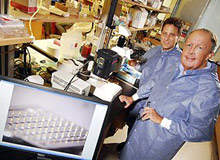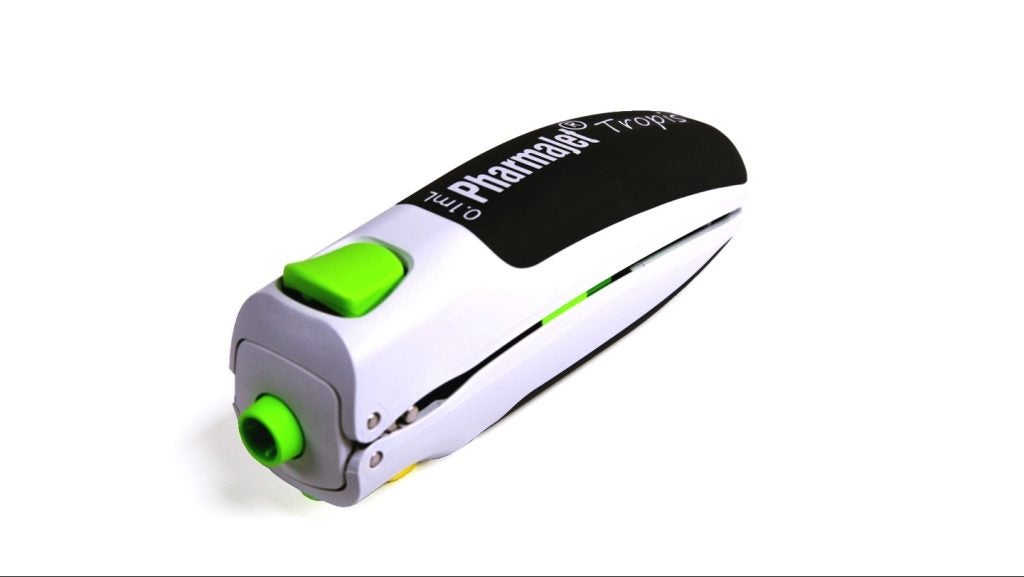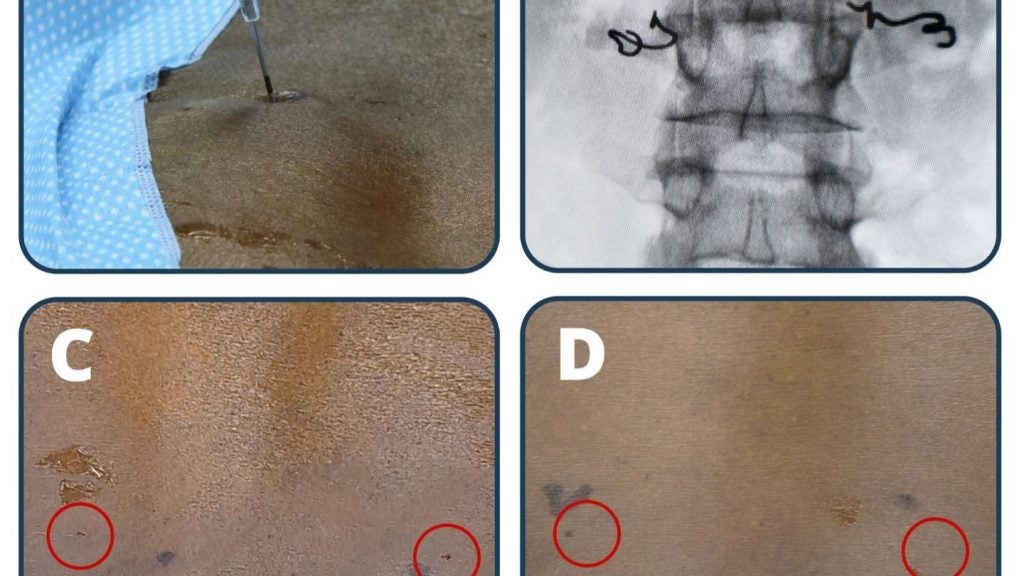
“This won’t hurt a bit…” we’ve all heard it before. The promise made while you sit fixated on the doctors’ surgery wall as if not looking at the needle will prevent the inevitable jab.
It never does, but researchers may finally be ready to deliver on the age-old promise of offering potentially pain-free injections.
Microneedles
Microneedles are the latest news in the world of drug delivery, offering a multi-billion-dollar business opportunity for the devices which studies suggest can deliver drugs into the body as efficiently as hypodermic needles.
By painlessly punching a series of microscopic holes in the outer layer of skin, the microneedles promise to expand the range of drugs and vaccines that can be delivered through the skin and into the bloodstream.
The needles’ success was recently reported in the journal, Proceedings of the National Academy of Science, detailing the first time they have been tested on humans. The study was carried out by researchers at the Georgia Institute of Technology in conjunction with researchers from the UK College of Pharmacy and the UK College of Medicine.
How well do you really know your competitors?
Access the most comprehensive Company Profiles on the market, powered by GlobalData. Save hours of research. Gain competitive edge.

Thank you!
Your download email will arrive shortly
Not ready to buy yet? Download a free sample
We are confident about the unique quality of our Company Profiles. However, we want you to make the most beneficial decision for your business, so we offer a free sample that you can download by submitting the below form
By GlobalDataWorking with a small group of test subjects a section of skin on each person’s arm was selected and prepared by pressing and removing thumb-sized patches that contained 50 stainless-steel microneedles, each about 620 microns or 1/40th of an inch in length. Gel containing a drug used to treat alcohol and opiate addiction, naltrexone, was applied to the prepared area and covered with a dressing. The concentration of the drug in the individual’s bloodstream was then monitored for 72 hours.
The results showed active concentrations in the subjects’ blood streams at levels which remained steady for at least 48 hours. “This proof-of-concept study shows that microneedles work in humans for transdermal drug delivery,” says Daniel Wermeling, associate professor in the department of pharmacy practice and science at UK’s College of Pharmacy. “Success with microneedles could cause us to rethink the convergence of the drug and delivery system and lead to a more integrated approach, merging engineering with pharmaceutical technology.”
Sharpen up
New legislations and a trend towards outpatient treatment are both changing the dynamics of drug delivery. The new Needlestick Injury Prevention Act in the United States now sees health providers cited under the Occupation Safety and Health Act and is just one indicator of how the market for effective drug delivery is set to expand.
International analysts Frost & Sullivan have said the US needles market generated $1.64bn in revenue in 2005 with the drive for needle-free devices only expected to push it along further by 2012.
In addition, a report from Global Industry Analysts shows that strict federal laws in the US as well as recommendations by the National Institute for Occupational Safety and Health (NIOSH) and the Center for Disease Control and Prevention (CDC) were all adding impetus to the use of safety needles and needle-free injection systems.
“The rise in popularity of self-injection devices for patients with allergic asthma and migraines is also expected to boost the use of needles for self-administration of hypodermal medications,” says a spokesman from Global Industry Analysts.
With the largest share of the needle market still going to the hypodermic sector (estimated to take home a 36.3% share with insulin delivery a close second on 32.3%) analysts say medical device manufacturers have to be innovative with an eye on safety to keep up.
Executive director of the International Sharps Injury Prevention Society Ron Stoker says there are many manufacturers that have designed some outstanding safety products but, “until the goal of zero needlestick injuries is reached – we are not doing enough.”
Stoker says while needleless injection to date has not been received very well by clinicians or the public, microneedle technology could hold some answers for the future. “Although many individuals have a phobia towards needlestick injuries needleless devices have not kept up with expectations. I believe that we are five years or more away from a device that will be accepted well by clinicians and patients.”
Live testing
Mark Prausnitz, a professor in the school of chemical and biomolecular engineering at the Georgia Institute of Technology says its seminal research into the effectiveness of microneedles in live subjects is an important landmark in the development of this technology and its suitability for use in clinical medicine. “This method may be useful for a broad range of drugs that cannot normally be delivered without a hypodermic needle,” Prausnitz says.
“This study addressed the simplest use of microneedles in which the needles are just inserted and removed from the skin and a drug patch applied. To understand how broadly microneedles can be used in medicine, we will also need to study delivery of other therapeutics, such as lidocaine, insulin and the flu vaccine.”
Prausnitz has been developing the devices for more than ten years and the team at Georgia Tech has been looking at further advanced needle systems which could see drugs effectively dissolved into the blood stream. “We expect microneedles to be less painful than conventional hypodermic needles because they are too small to significantly stimulate nerve endings,” Prausnitz says.
New drug-delivery methods
Since their work began in the mid-1990s, Prausnitz and his colleagues have looked at microneedles constructed from titanium, stainless steel and a variety of polymers – which appear the most interesting of all.
Prausnitz’s team, alongside Emory University, is working on microneedle patches for a flu vaccine with the help of an $11.5m grant from the National Institute of Health. The needles are made from the strong polymer, poly vinyl pyrrolidone or PVP, which is water soluble and not harmful to humans but could allow needles to dissolve, complete with a vaccine inside, straight into the blood stream. Prausnitz says the microneedles work by dissolving and releasing medicines encased within them. The technique used to mould the needles means that they can be tuned to dissolve depending on how much time is needed for them to travel through the body to the delivery site.
Prausnitz’s work has also extended to looking at how microneedles can be used to deliver drugs to the eye through a minimally invasive procedure. The needles used to penetrate the eye only go as deep as half a millimetre into the eye tissue. This means that they do not penetrate far enough to cause as much damage as traditional needles. As a result, they can be applied to the eye using only local anaesthetic.
This technique has the potential to revolutionise the way of treating common eye conditions such as glaucoma, macular degeneration and diabetic retinopathy.
Samirkumar Patel from the research team says that although the research is at an early stage it does show that it is possible to use microneedles to effectively deliver drugs to targeted sections of the eye.
While the research is ongoing, the possibilities for the use of microneedles seem extremely promising and potentially very lucrative. The spin-offs are not only positive for patients who cannot stand the sight of needles, they also offer safer drug delivery for the medical professionals.





